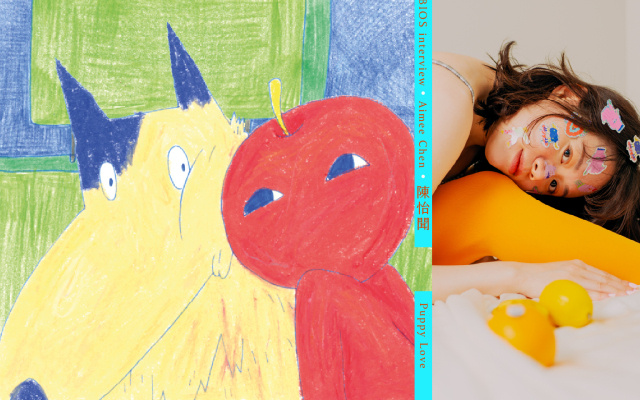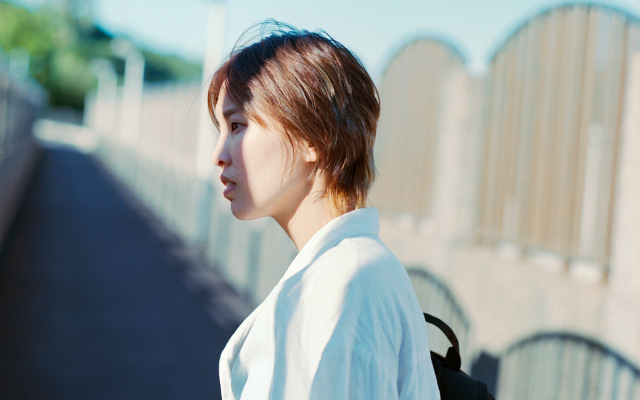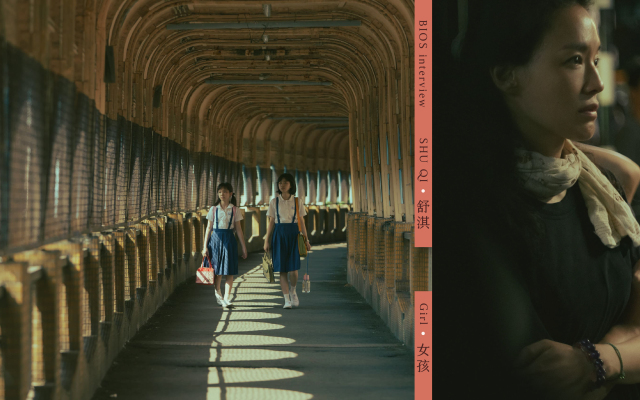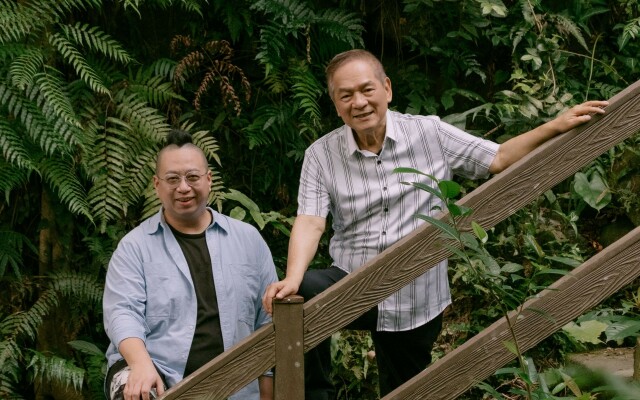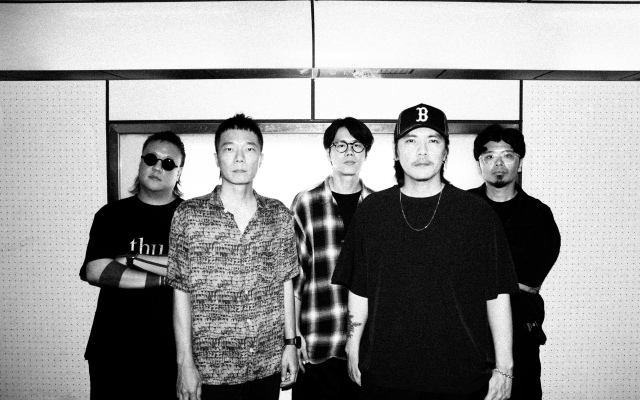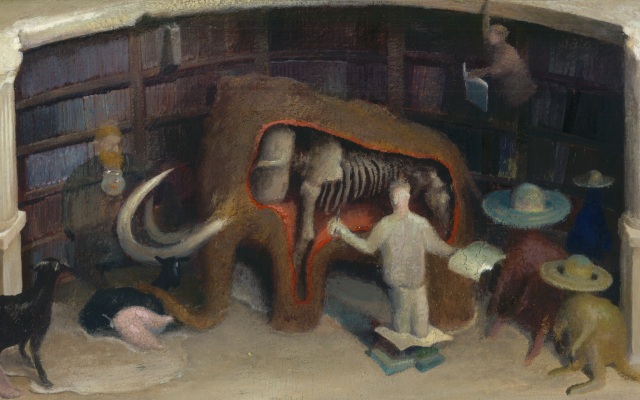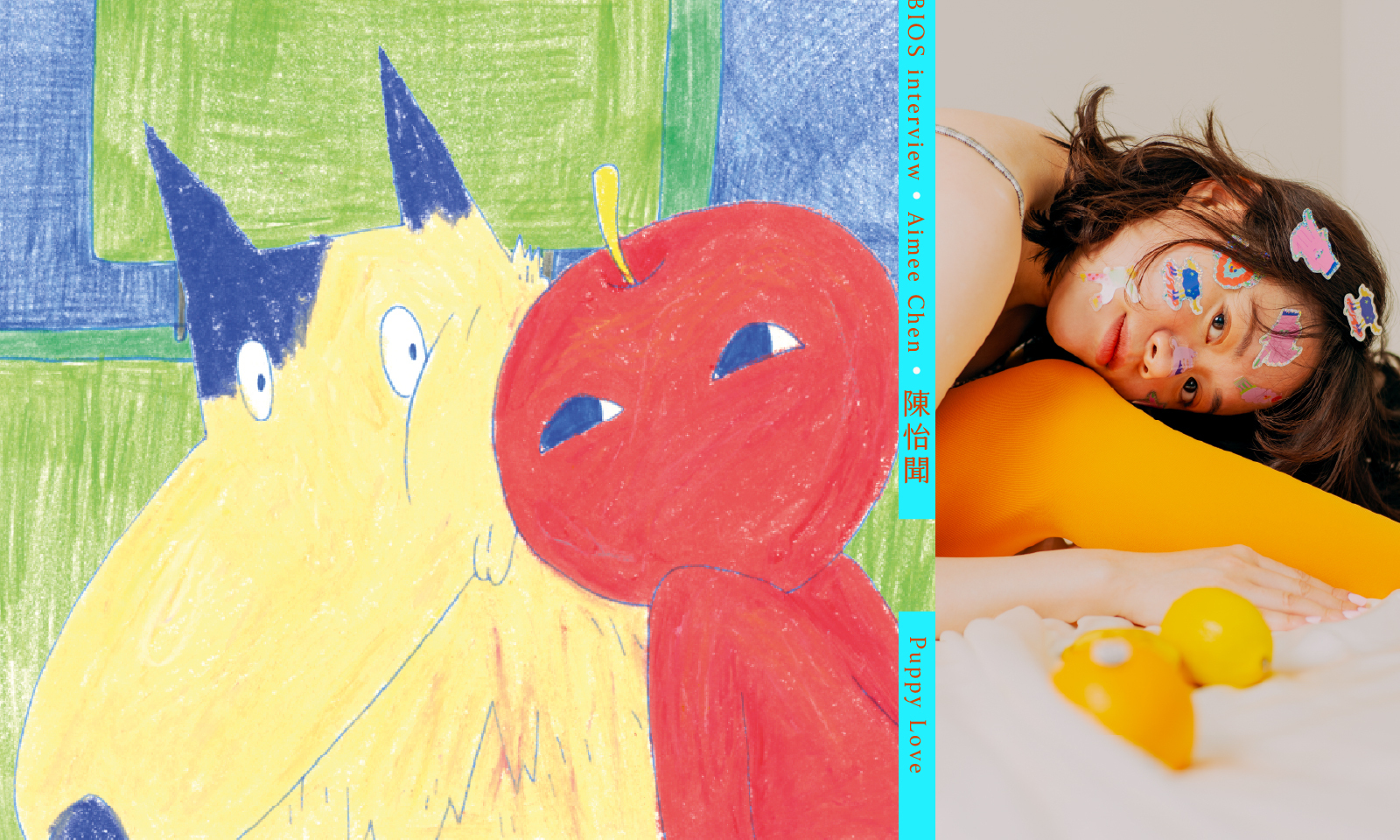
The Art of Seeing: A Dog, and Something More — An Interview with I Wen (Aimee) Chen
Based in New York, Taiwanese animator I Wen (Aimee) Chen has garnered widespread acclaim through her experimental animated film Puppy Love, which centers on her beloved canine companion. She achieved the rare feat of being nominated in three of the world’s four major animation festivals, including the prestigious Annecy International Animation Film Festival, often regarded as the pinnacle of the animation industry.
Her oeuvre deftly intertwines humor with taboo, employing playful experimental collage techniques to interrogate patriarchal norms and the boundaries of visual art. Through her formidable artistic prowess, she has demonstrated that Taiwanese artists can indeed shine on the global stage.
While painting in her room, I Wen Aimee Chen noticed her dog, Migo, quietly observing her.
His sharp Border Collie gaze was fixed on the canvas, leaving her momentarily unsettled. Familiar with the breed’s intelligence, Aimee couldn’t help but wonder: was he simply watching, or trying to understand? Could a dog engage with visual art?
The question remains unanswered, but the moment left a mark.
At the time, Migo was in his adolescent phase — restless, disobedient, and occasionally dramatic. Once, he jumped into a park pond against orders and ended up in the local news. He also developed a curious habit of responding to Aimee’s artwork. Unfavored pieces were left beside with feces. Truly disliked ones were shredded without mercy. As Aimee kept painting, the war between dog and art continued to rage on
Then one day, she had an idea. “I told him, ‘How about I draw you instead?’ And he gave me that look like, ‘Well, you’ve never tried, so how would I know if it’s good or not?’”
She grabbed her crayons and in a few quick strokes, sketched him. She half-expected Miguo to retaliate, perhaps with a grand pile of poop, or by tearing the paper to shreds. Surprisingly, he quietly lay down on top of the drawing. The wild, headstrong Miguo suddenly turned gentle, almost tender; it was a side of him Aimee had never seen before.
She was then a student at the Taipei National University of the Arts, unaware that a spontaneous sketch of Migo would evolve into Puppy Love, her graduation film. The short experimental animation, centered on her relationship with her dog, would later be selected by the Annecy International Animation Film Festival. Often referred to as the Oscars of animation, the festival marked a pivotal breakthrough in her career.
That early drawing became the beginning of something larger.
Looking back, Aimee doesn’t believe Migo understood the art. More likely, she says, he was simply self-absorbed.
“I think he just enjoyed being the center of attention. He believed he was special.”
The Most Rigorous Artistic Training: Gazing at a Dog
A dog who loves attention. An artist who can’t look away.
This quiet, daily exchange between Aimee and her Border Collie, Migo, began in high school. As her mother drove her to class, Migo sat silently in the backseat. Aimee watched his fur, the way his teeth lined up, how his coat caught the light. The view outside changed, but the ritual never did.
This way of seeing came from years of training. Aimee started charcoal drawing early, learning to read curves, shapes, and lines. By eighteen, after years of sketching and watercolor, her skills were already professional. She later studied animation at Taipei National University of the Arts, where she found a new medium to carry her habit of close observation forward.
What started as daily glances turned into something more obsessive? “A dog’s personality is simpler than a human’s,” Aimee says. “It still surprises me how long I can stare at him.” She even recalls reading that canine beauty is judged by snout length. Border Collies, with their long snouts, seemed ideal. She studied Migo lying down, sitting, turning his head. Every angle mattered.
“It’s like seeing Keanu Reeves. After that, no one else compares.”
Over time, this quiet affection grew deeper and stranger. “When I see through Migo’s eyes, people lose their charm,” she admits. The feeling confused her. Her love for the dog was real, but where did it come from? It was shaped by long observation, but also something more intimate. Drawing him became a way to connect, to cross a boundary between species, to feel something new.
.png)
That relationship became the foundation of Puppy Love, Aimee’s animated short. The film follows Apple, a young woman who pours her emotional world into her dog after a long period of isolation. Their car rides become moments of silent affection, and then something deeper, more mysterious.
The film shifts into surreal territory, exploring desire and attachment with irony, tenderness, and bold visual language.
“I love him,” Aimee says. “But I often question what that love really is.” In her eyes, Migo is more than a pet. He’s a being in progress, something between a dog and a person, like a plant that grows, blooms, and fades.
“For me, raising a dog is like tending a garden,” she says. “Each day brings small changes. That’s what I pay attention to.”
The Halo and Shadows of International Acclaim
The relationship at the heart of Aimee Chen’s animated short Puppy Love is not easily defined. Her connection with her dog, part companion and part muse, is layered and complex. It’s a relationship that resists words and instead takes form through her art.
In Puppy Love, that emotion becomes visual. The film abandons linear structure. Storyboards jump, scenes fracture, and characters drift with childlike absurdity. Anthropomorphic figures and spontaneous doodles appear to move without logic, creating a world that is disarming and surreal.
Aimee deliberately avoids polished animation. Her style favors bold color blocks and sharp contrasts. The rough, expressive quality recalls the energy of neo-pop artists like Keith Haring. Instead of intricate detail, she embraces rawness. “In Makoto Shinkai’s work, for example, a female character’s hair flows in dozens of soft layers. I chose to go the other direction. I want my images to hit fast and hard,” she explains.
Behind the playful chaos is intense labor. Puppy Love was hand-drawn, frame by frame, at 24 frames per second. This method, considered the purest form of animation, allowed Aimee to push the limits of expression. But it came at a cost.
“I started with crayon sketches, but I nearly gave up,” she says. “Every frame had to be different, and my perfectionism made the process brutal.”
.png)
.png)
She did everything herself, from script to character design to post-production. The film took seven months to complete, with 12-hour workdays, every day. When it debuted in 2019, Puppy Love quickly attracted international attention. It was nominated at the Ottawa International Animation Festival and the Zagreb World Festival of Animated Films.
Then came Annecy. As one of the world’s most prestigious animation festivals, in 2025, Annecy receives over 4,000 submissions and accepts fewer than 5 percent, only 200 works were selected. Typically, Taiwan sees one film make it to a top-tier festival each year. Aimee made it into three.
With the recognition came controversy. The film’s themes—touching on bestiality and interspecies intimacy—sparked debate. Some praised its boldness. Others responded with online harassment and disturbing comments aimed at the filmmaker herself.
“It hurts,” Aimee admits. “Even the strongest person would feel that.” Over time, she came to see the backlash differently. “The loudest critics are men who feel threatened. The film challenges a system that favors them.”
Confronting taboo is not new for Aimee. Her earlier works, including LIU (2018) and Can Dogs Get Pregnant by Humans? (2021), explore female sexuality, memory, and moral boundaries. These films ask questions about feelings that are difficult to name and often left out of mainstream narratives.
.jpg)
.jpg)
Her approach was shaped early on by Devilman Crybaby, a brutal and expressive anime series by Masaaki Yuasa. “It was the first time I saw animation that raw,” she says. “It made me realize you could use this medium to say something real about human nature.”
From Animator to Designer: Navigating Beyond Conventional Boundaries
After the success of Puppy Love, Aimee’s path was far from smooth. Like many art school graduates, she faced the challenges of breaking into the professional world.
At first, she juggled freelance gigs while experimenting across disciplines, from traditional hand drawn animation to computer vision design and motion graphics. “The animation industry needs new roles like animation art directors,” she says. “These roles bring fresh creativity and help define Taiwanese animation as a cultural asset on the global stage.”
.jpg)
Aimee planned to refine her style by studying animation in Europe. With an award winning portfolio, she expected admission to top schools. “I thought winning international awards would guarantee a spot.” she recalls. But months passed without any acceptance letters.
The timing was brutal. The pandemic hit. Economic uncertainty and rising anti Asian sentiment made opportunities scarce. Aimee soon realized she was boxed in by the label independent animator.
“The artist identity no longer fits the old industrial model of just producing images,” she says. “The animation world is fractured, from the pandemic to mass strikes. I had to find a new place in this shifting landscape.”
She shifted focus to computer arts, enrolling at the School of Visual Arts in New York. Her goal was to learn how to turn creativity into commercial success and to see how others thrive in the global ad industry. Though it was a practical move, it broadened her horizons.
Five years later, Aimee graduated and joined CLO Virtual Fashion, a digital apparel design company, as a motion designer. The pace in New York was intense. Deadlines were tight, and mastering new software—from 2D to 3D and photography—was crucial. The first months felt like a trial by fire. Yet this experience gave her insights into commercial motion design and industry operations she never got in art school.
In 2024, her company won the Academy Scientific and Technical Award by the U.S. Academy of Motion Picture(USAMP) alongside Pixar and Sony Animation. Now a leader in digital garment software, CLO revealed a side of the creative world Aimee had never seen.
Despite moving away from pure animation, she credits her hand drawn training for a key advantage. “It taught me the image-making process not as rigid theory, but through hands-on trials and errors,” she explains. “I learned which rules to follow and when to break them.”
Aimee’s journey has been one of constant questioning. Should she focus on art or steady work? Build a portfolio or study market trends? Which skills will open doors? “There were times when these doubts kept me up at night.” she admits.
In those moments, her dog gave her a simple but powerful lesson.
“Living with my dog, his world is simple: eat, sleep, rest when sad, walk when happy. He shows me not to overthink—just live. When your mind quiets, intuition takes over. You check if it feels right.”
This mindset—just live, don’t overthink—has guided her forward. Through wagging tails and quiet companionship, her dog taught her life’s beauty lies in its simplicity.
Whether in art or work, Aimee says it’s okay not to have all the answers. “Sometimes showing up and moving forward is enough for life to unfold.”
.jpg)
.jpg)
.jpg)
.jpg)
